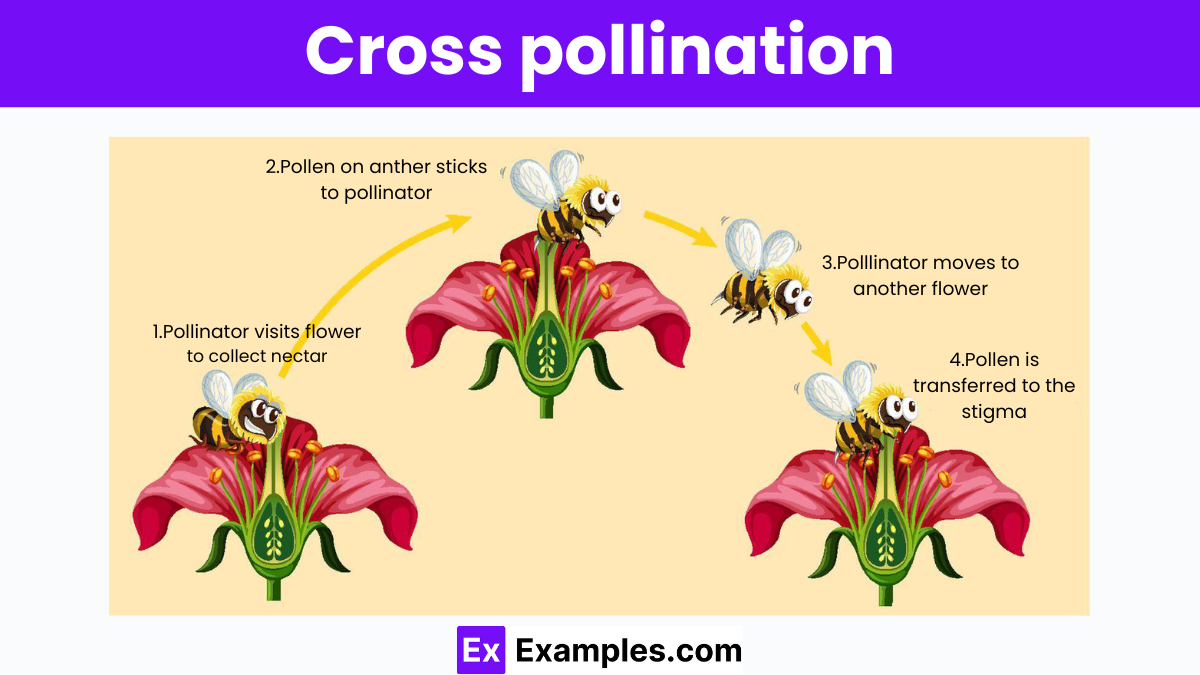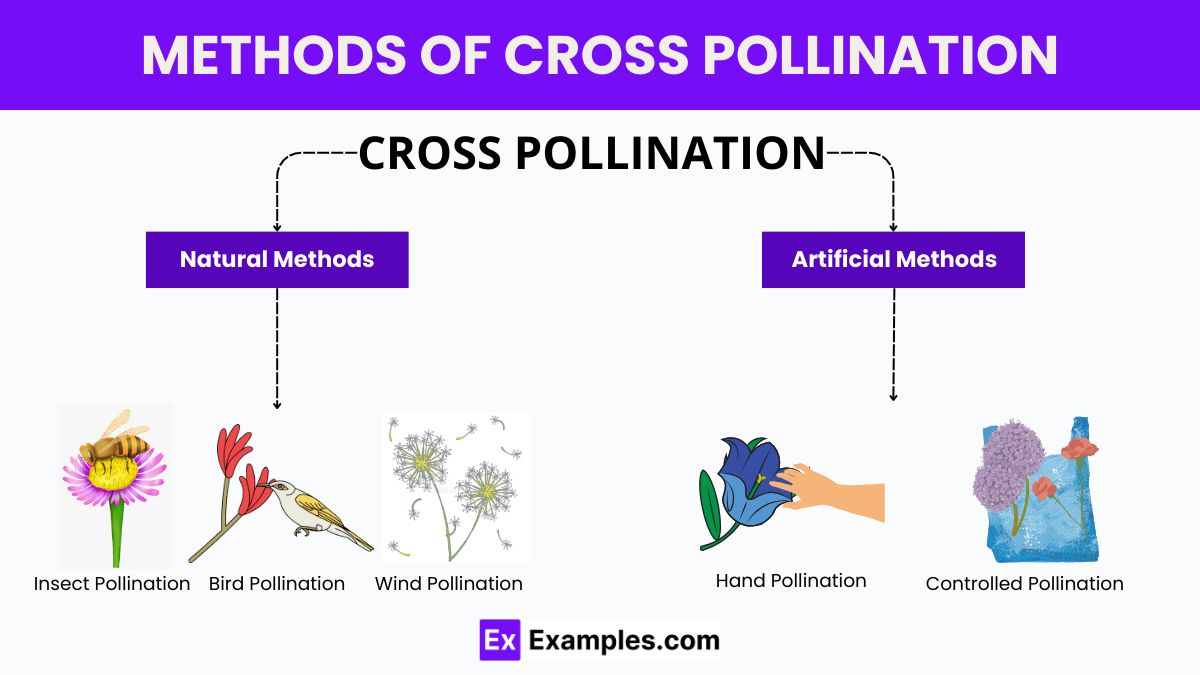What is cross-pollination?
Transfer of pollen from the anther to the stigma of a flower on a different plant
Transfer of pollen from the anther to the stigma of the same flower
Transfer of pollen from the anther to the stigma of a different flower on the same plant
Transfer of pollen within the same flower



